#community gardening
Text


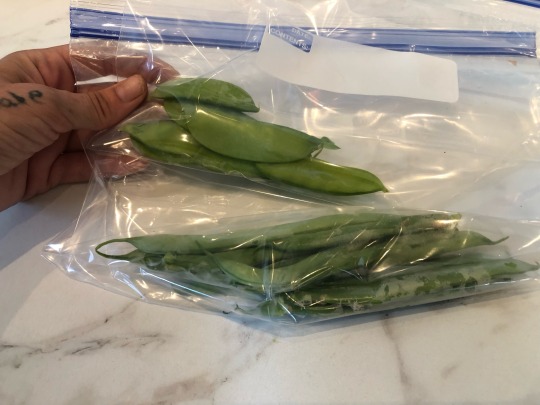
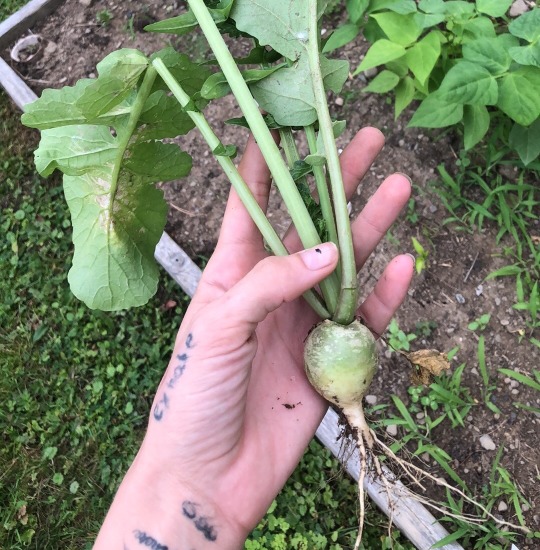
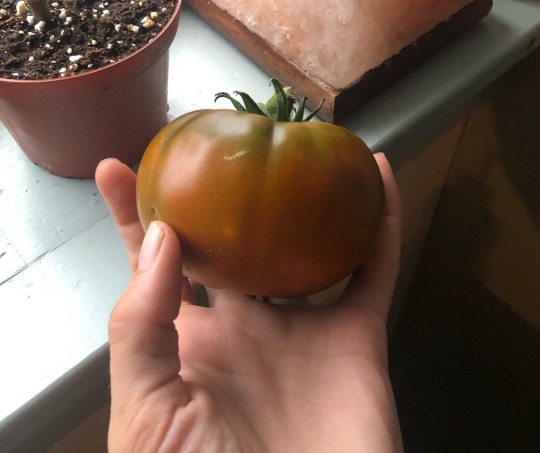


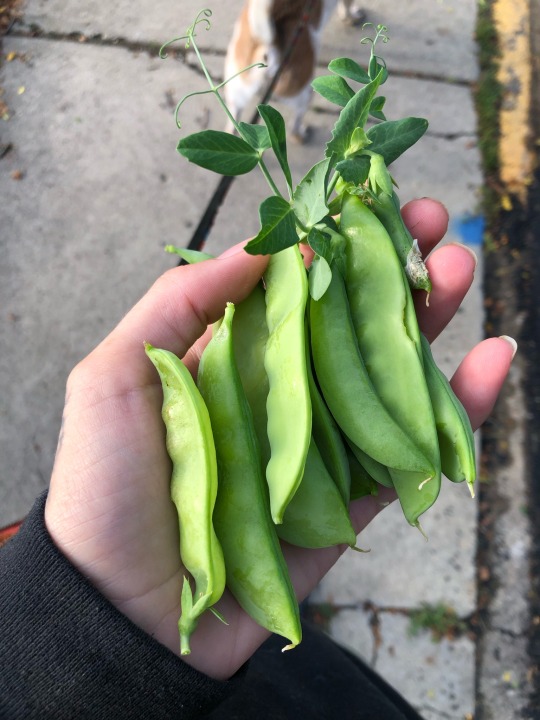
I’m very excited and grateful for the things I’ve been able to harvest this year so far 💚🥒 tomorrow I’ll be going down to the community garden and doing some weeding and harvesting, making some honey corn bread and processing some herbs I harvested as well.
#lughnasadh#Lammas#harvest#garden#gardencore#urban gardening#community gardening#container gardening#food forest#nature#pagan#holiday#celebration#paganism#Celtic paganism#eclectic#irish history#greenery#plants#gardener#love#food is free#community#direct action
132 notes
·
View notes
Text
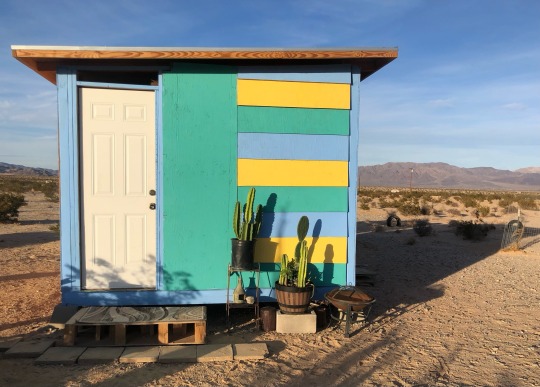

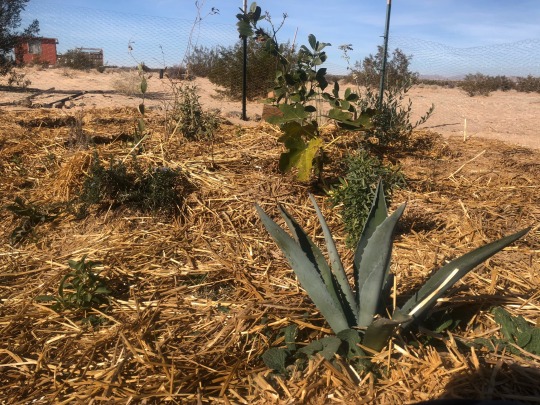
Desert restoration project in the hi desert.
55 notes
·
View notes
Text
Like this post if you have a communtiy garden
4 notes
·
View notes
Text
youtube
Recorded on April 20, 2023.
In this second part of our Grow Your Garden Group lunchtime series, we explore best practices and ideas for managing plot waitlists, and ways to keep members engaged in a variety of important garden tasks while they await a plot.
Facilitated by Erinn White and Hannah Wargo, NYC Parks GreenThumb
#NYC Parks GreenThumb#solarpunk#webinar#community garden#gardening#growing#garden#community gardening#plants#waitlist#plot#Grow Your Garden Group#Erinn White#Hannah Wargo#Youtube
4 notes
·
View notes
Text

@filthy-gorgeous is a horrid enabler. That is all.
#Personal#2024#Building Community In The Herb Garden#Kelly Fernandez#American Horticultural Society#Webinars & Lectures#Community Gardening#Oklahoma
2 notes
·
View notes
Text

“Nature helps you return to love.” #mauricesmall
Sending positive vibes to you as we ease into October.
#love#nature#trees#atlanta urban ag#whitehall#aglanta#community composting#community gardening#compost#soil#food systems#urban ag#biodiversity#food access#organic#polyculture#food justice#soil health#food security#soil food web#food sovereignty#maurice small
37 notes
·
View notes
Text

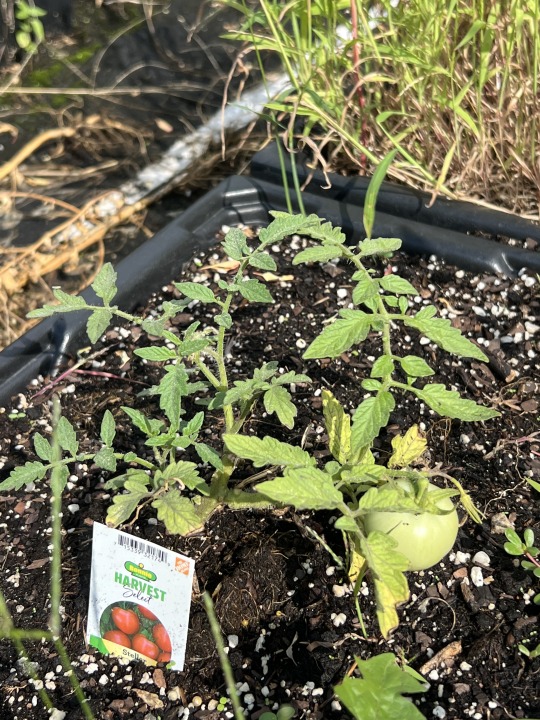
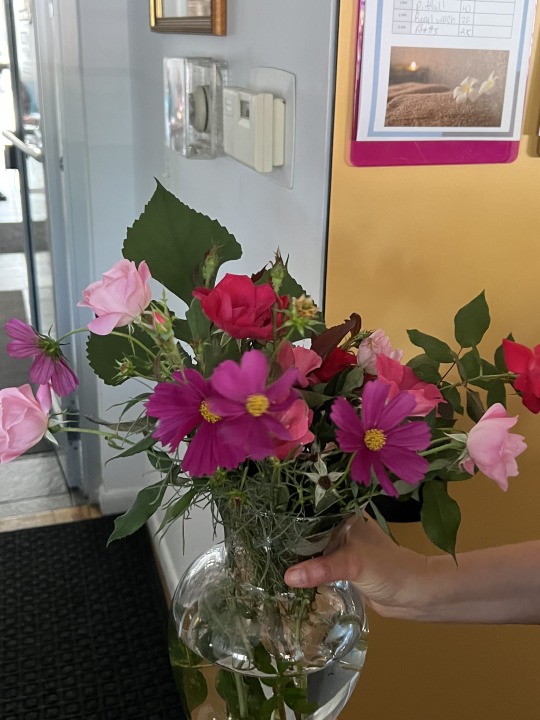
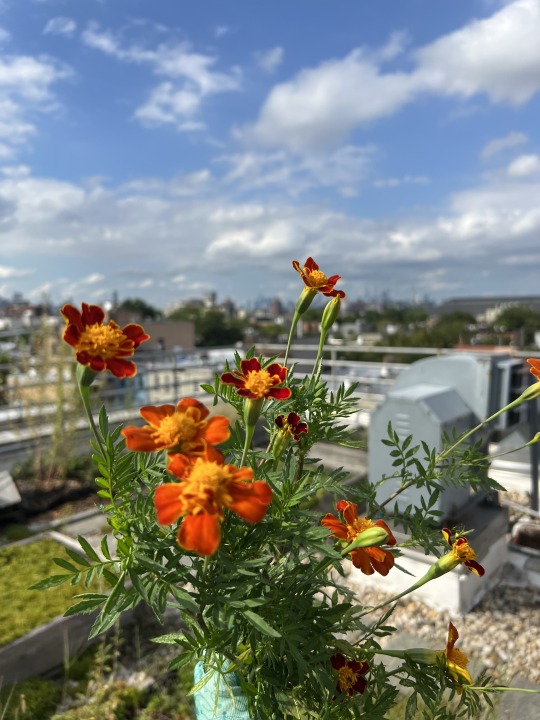
🌼🏡 Exciting News! Tenant Join Us! 🏡🌼
We're thrilled to announce a blooming new addition to our community – our tenants have joined hands for a fantastic gardening venture! 🌱💚 From planting vibrant flowers to creating stunning bouquets, our residents are embracing the joy of gardening together. 🌸🌿
🌿😊 Weeding might be a chore for some, but for us, it's a chance to bond, laugh, and make our housing program even more beautiful. Together, we're turning every weed-pulling session into an opportunity for connection.
🌼✨ Let's sow the seeds of friendship, nurture the bonds of togetherness, and watch our garden – and our community – flourish. 🌱💫 🏡🌸
#urban farming#community gardening#blooming#urbanfarming rooffarm brookyn awesome green#housing program#urban agriculture
2 notes
·
View notes
Text
the allergy i am seeing grow up around small talk in any form is troubling to me. do you know how to make friends with people in your physical environment? it typically starts with small talk. do you want to live in community? small talk. do you want to have the type of relationship with your neighbors where you can run over and borrow a battery for your smoke detector when it starts beeping at 10pm? small talk!! do you want leeway from your coworkers when you fuck up something small? you gotta be able to build a relationship and that's small talk, baybeee.
"but i don't need friends and i don't care about community!" okay, lone ranger, what about the people in your community who need you? "but i have social anxiety!" me too, bud! we simply must soldier on. making up lists of questions to ask people helps. and people are predisposed to be generous, i've found. even if you make some kind of mistake, what is this but the natural give and take of human interaction? nobody is perfect.
you were not put on this earth to live by yourself and then die. you need people and people need you. treat those around you with curiosity and generousness of spirit and you will gain so much goodwill in return.
#my pharmacist spotted me a weeks worth of meds once when mine were in a building closed for asbestos#because we'd been doing small talk for a couple of months and had a rapport#this is not emotional labor btw. in no way is 'doing small talk' emotional labor. dont say that.#edification#community is a garden
30K notes
·
View notes
Text

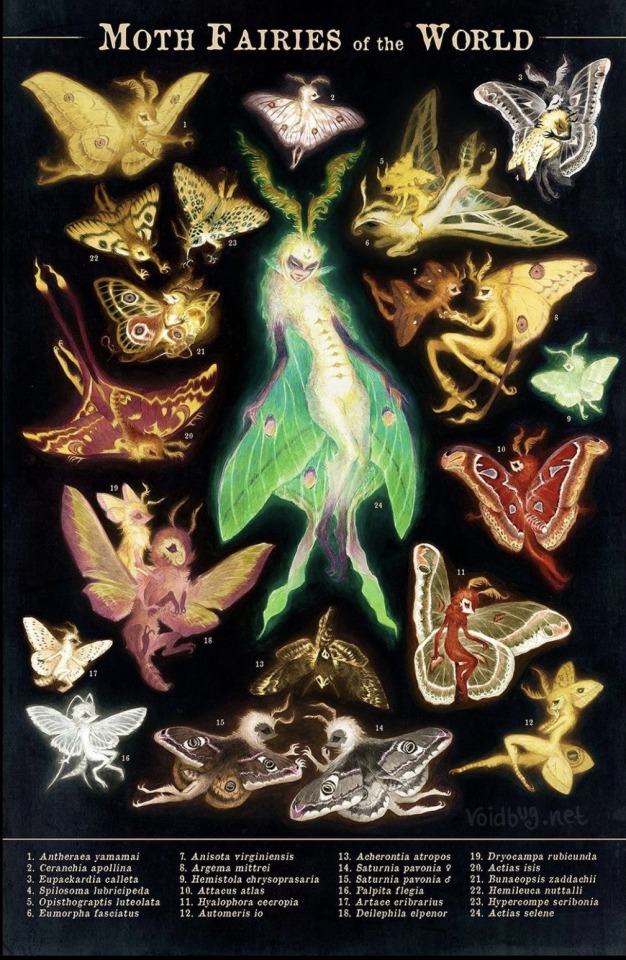
𝓑𝒖𝒕𝒕𝒆𝒓𝒇𝒍𝒚 𝓕𝒂𝒊𝒓𝒊𝒆𝒔 𝒂𝒏𝒅 𝓜𝒐𝒕𝒉 𝓕𝒂𝒊𝒓𝒊𝒆𝒔 𝒐𝒇 𝒕𝒉𝒆 𝓦𝒐𝒓𝒍𝒅
© Malina Dowling
#painting#art#artblr#illustrating#fairycore#moth#butterfly#illustration#fantasy#goblincore#gardencore#garden#cottagecore#grandmacore#cottage#cozycore#cozy#fairytale#fairytales#artist#magic forest#book illustration#illustrator#illustrations#artists#oil on canvas#oil painting#art community#art gallery#art blog
5K notes
·
View notes
Text
If people make cutesy posts about growing food and herb spirals and composting but never talk about stuff like preventing and getting rid of rats in a garden, I get this suspision that they either haven't actually gardened much or they're more interested in presenting an aesthetically pleasing image than in actually preparing people to deal with a garden.
#Like the unrealistic gun hoarding bunker doomsday preppers of gardening#but instead of imagining a world without rules and community they imagine a world without rats and mold and plant virusses#Which is a better worldview than those preppers but not a more realistic one.
5K notes
·
View notes
Text
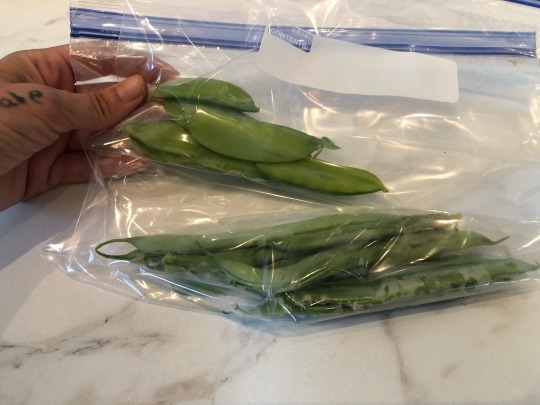
We were able to harvest 11 bush beans and 7 Oregon sugar pea pods so far! I am sooo excited! I hope these stay fresh long enough for me to have a big enough harvest for a meal! I have a cucumber that’s also almost ready, I could probably make a delicious green salad!!
Im just so happy to be able to grow some of my own food despite having no yard of my own, and also to be able to share my passion with others through the community garden and the Grow It Forward NY program ☺️
#blessed#growing food#gardening#11 beans#plants#happy#garden#western Ny#food#planting#beans#peas#community#community gardening#raised beds#community garden beds#container gardening#urban gardening#rooftop gardening#July 24
12 notes
·
View notes
Text
Community tree planting in the Mojave desert was fun! We planted 14 trees, 10 shrubs & herbs and 4 different types of grass. Majority of the plants and trees are native to the area. Thanks for coming out and making it happen!

This is a pocket forest inspired by the Mayiawaki method. It is meant to mimic the natural forest. We created an ecosystem that will be self sustainable within 3-5 years. Pocket forests are suitable for barren land and the urban city.



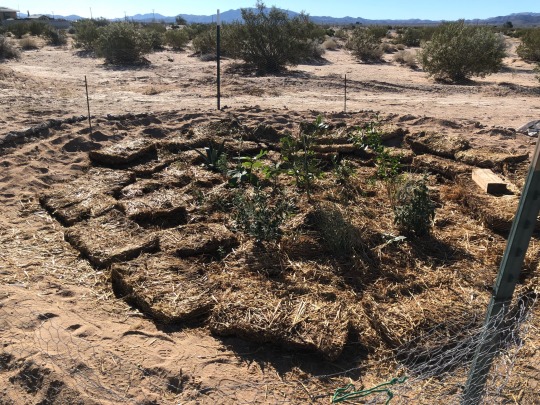

#urbansoulfarmer#mojavedesert#restoration#Myiawakimethod#food desert#community gardening#growtrees#treesinthedesert
55 notes
·
View notes
Text
This is approximate since calculations vary, but somewhere in the neighborhood of 20% of carbon emissions since the Industrial Revolution have come from destruction of terrestrial ecosystems—wetland destruction, deforestation, degradation of grasslands and so on
Soil, soil communities, root systems, carbonate rock, wood, living plants, and peat in wetlands—all holds carbon
Now consider what plants do for you
The mere sight of plants and trees improves mental and physical health. I won't elaborate much more upon this, the positive effects are incredible and overwhelming.
Trees and vines that shade your home and outdoor areas: reduce the cost of cooling, meaning less electricity is used. Shade reduces the risk of death in extreme heat events.
(Trees also reduce light and noise pollution)
Edible plants (many wild plants and many plants you can grow): provide you with food reducing your dependence on industrial agriculture and cars to reach supermarkets
Community gardens and orchards: creates resilience and interdependence among small local communities, reducing the power of capitalism and increasing the ability of individuals to organize and create change. Makes more sustainable and plant based diets accessible to people for whom they would ordinarily be inaccessible
Compost piles for gardening: less greenhouse gas emissions than result from waste breaking down anaerobically in landfills
No more traditional lawns: much less use of gas powered lawn mowers, weed whackers etc. which are, by themselves, significant contributions to carbon emissions and urban pollution
Crafting and creating using plants: Locally available wild plant species can be used by local crafters and creators for baskets and containers, yarn, fabrics, dyes, and the like, resulting in less dependence on unsustainable and unethical global industries
More people growing and gathering edible and useful plants and using them = larger body of practical, scientific and technological insights to draw from in order to solve future problems
In conclusion: Plants
#plants#plantarchy#you are a caretaker#climate change#climate change mitigation#climate change adaptation#gardening#community gardens
3K notes
·
View notes
Text
The Hidden Dangers of "Seed Bombs"
Items that have become known as "Seed Bombs" have become popular in the last decade. These are generally made from biodegradable or natural materials, and contain seeds (and sometimes organic fertilizers)- typically with an emphasis on food crops, flowering plants, and / or herbs; the point of them is to provide a quick-start plant growth kit that one can essentially throw into a field and just walk away from.
Predominantly they're used for an action known as “Guerrilla Gardening”, an eco-politically driven form of activism; as activism, Guerilla Gardening is a direct action against Land Neglect, "Lawn Culture" (which is itself often poorly defined by individuals with no actual understanding of what constituted a real lawn- and with little actual distinguishment between the individual concept of Lawns, and the Lawn Culture which actually causes the issues), and other interrelated issues --- most of which concerns what is considered "wasted land" that could otherwise by put to good use, ecologically, communally, or otherwise.
As the Valhalla Movement once states about one particular company (whose name and information I've since removed due to their political affiliations):
Seed bombs began as a fun and friendly tactic for greening abandoned lots in urban spaces. “Guerrilla gardeners” throw balls of seeds and fertilizer into fenced-off spaces that are otherwise neglected, such as brownfields or land in zoning limbo.
Now, a California company is using seed bombs as a strategy to fight the disappearance of bees. [Founders] started [Company] with the aim of spreading bee-friendly wildflowers in neighborhoods around the country.
Overall, the idea is a novel one that, admittedly, had the potential to do a lot of good. This can be true especially with the problems our pollinators face ... There are more than a few issues with it, however.
Firstly is that, despite its positive potential, Guerrilla Gardening itself is most often illegal. Not that anyone actually cares about that, however (and frankly neither do I); intentional land hoarding and land neglect is, it's safe to say, a noble enough cause to say "fuck the law" on, I think. However, that doesn't ignore the facts.
More important than the legal issues one can get into by far, though? Is that Seed Bombs aren't actually as “fun and friendly” as they're typically marketed as being ... In fact, they have a chance to be incredibly damaging to the ecosystems they’re introduced to- something which is the exact opposite of its claimed intent.
To understand how, though, you have to understand that no plant is created equal. Regardless of where you are in the world, each region; each state; each local area … Every ounce of land existing on this planet, really, has three important classifications of plants which exist within it: Native, Nativized (or Naturalized), and Invasive.
⭢ Native indicates that a plant evolved within that region on its own in some form and grows there naturally. Because of this, Native Flora often has an often incomparable and unique ecological relationship with the native Fauna; they're important food sources for local insects and animals (and sometimes the only food source at all for particular species). And because they're already a part of that specific environment in the first place, they have the lowest negative ecological impact on the ecosystem of that area- although this isn't always the case, as seen by the Eastern Red Cedar situation here in Oklahoma.
⭢ Nativized or Naturalized, on the other hand, indicates that a plant does not naturally grow in an area and was actively introduced to it. Unlike Invasive plants, however? Naturalized plants fit within the existing ecological structure instead of competing against, disrupting, overtaking, or destroying it. And like with Native plants, sometimes Naturalized species also become important sources for local fauna as well without outcompeting other sources. This means that, for all intents and purposes, these can be considered beneficial- or at least neutral- inclusions to the environment.
⭢ Invasive, however, means that the plant was introduced to an environment and has had an actively negative and detrimental impact on the ecosystem after said introduction- typically by outcompeting, taking over, and ultimately destroying the Naturalized and Native plants within the area. See: Kudzu in the American South.
So what does this have to do with Seed Bombs? Well, it concerns the seeds which are found in them, and whether or not they're actually even the right seeds for the environment in which they're being planted --- and in whether or not the people planting them are actually going to come back and pay attention to any specific management needs they may have if not ... And unfortunately? Not only is the entire act of Guerilla Gardening completely counter to active management practices that are required for non-naturalized (and even actively invasive) species, should they be introduced? There is almost no emphasis placed on Seed Bombs being safe for local environments during the manufacturing process.
While some larger manufacturers of Seed Bombs may occasionally list the plants they contain seeds for (with or without their appropriate Latin names), and will produce packages which are supposedly tailored to certain regions? Not all manufacturers do this even on the large scale manufacturing level. And even when they do, I've personally found through intense scrutiny that, even then, many of them are not actually formulated correctly for the specific environments which they claim to encompass.
Take the company Seedle, for instance. While they do provide regionally specific seed packages, my own state of Oklahoma is incorrectly listed regionally; according to their company, Oklahoma is included in the "Southwest" regional designation- which is entirely inaccurate.
Oklahoma is a Southern (not Southwestern or even Midwestern) Transition State ... But the major problem, however, is that Oklahoma is also the most environmentally diverse state in the entire United States- containing more unique ecosystems per square mile than any other state in the nation (including Texas and California). It's only the western portion of our state (roughly the vertical strip of land West of Enid) which actually shares related fauna with the generic "Southwestern" region.
If I wanted to be properly accurate? I would need to buy either the Midwestern of Southeastern package for my area. Likely both. Because Oklahoma as a whole, being a Great Plains state, shares the majority of it’s native flora and fauna with Kansas, Arkansas, Louisiana, and Texas- not states like Arizona and New Mexico.
This problem doesn’t only present itself with larger manufacturers, however. Smaller manufacturers (such as shops on Etsy) may not always list the plants, either. And with the increased emphasis on Seed Bomb DIY, even fewer of those guides place any emphasis at all on making sure to include only native or naturalized plants- and being careful not to include any invasive ones. In fact, many of the recommended herbs and flowers in many lists are outright invasive in most areas of the United States!
But the only reason I personally actually know all of this? Is because I personally spent half a decade working as a Civilian Conservationist, actively working with real professionals in these fields ... If you didn't have my background or an equivalent, you'd have no idea- and that's the rub: The average person doing these things, even in activist circles, is a regular ole' Joe kind of civilian --- and the average civilian is simply not often well enough educated on actual scientific and ecological matters. Especially not the need to be incredibly careful about what we plant and the reasons why. Worse, they often don’t know there's even a need to be educated about this kind of thing in the first place.
And when you do educate them? In my direct and very personal experience over the last decade, there's frequently a lot of hostile pushback because their idea of ecological activism is often ingrained in their minds as "more important" and "more valid"; there's a very big "do what I want, how I want to do it" energy- even from people who claim to actually want to "help the Environment". And this often extends outright to big name organizations behind these movements, too.
While that lack of education is certainly no fault of their own in many an individual's case (though companies themselves can no longer be excused in my eyes)? This knowledge is still incredibly important. And that's what makes this kind of ignorance so dangerous.
Invasive plants, specifically, can very easily destroy entire ecosystems wholesale; the environmental problems they can cause can rang from a dwindle in local plant populations, to the complete and total ecological loss of entire local species. And if the plants go? Then the fauna that relies on them go with them- damaging entire ecosystems which're interconnected and interdependent on these different facets; even smaller invasions in one neighborhood can cause problems across an entire area.
Thus comes the potential for a destructive nature, though: If a Seed Bomb contains plants which are known to be invasive to an area, and those are introduced via well-meaning Seed Bomb scattering by uneducated civilians? It can wreak havoc on a local ecosystem. That havoc could be small and easily manageable, or it could be disastrous depending several factors- and it’s incredibly hard to know which direction it could go unless you have the education to know or control impact (and the time and ability to do so).
Yet not all plants are invasive to every region; a plant’s status can change from one region to the next one- and hardly any plant will have the same status or impact in different environments. This is why it's important to be educated, and to know where to look for this information (or who to ask).
Ensuring that our Seed Bombs contain safe plants is not the only thing, though. Another is the issue of Commercial Plant Stock vs Native Plant Stock in general. And your standard Commercial plant stock? Just isn't going to actually cut it if you want real ecological impact; commercial plant stock has a much smaller ecological impact compared to those wild plants that are genuinely native to the area and evolved alongside the local fauna- even if those plants are considered naturalized to your area, not invasive, and are cheaper for you to obtain.
More than that, is microfocusing and which areas of our ecosystems we are microfocusing on; taking the Bee-specific seed bombs we spoke about earlier, and using it as an example: Commercial products and guides tend to microfocus on the Honeybee, but they are only a small cog in a greater machine- and they're not even the ones actually endangered or at risk. In fact, there are 20,000 known species of Bee- not all of which are found in every area, and not all of which pollinate the same plants- and microfocusing on the Honeybee happens to be further endangering every last one of them.
Knowing what species of Bees are in your area, and what native plants they often pollinate, helps greatly when choosing or creating Seed Bombs … But even this isn't including the thousands of other insects that are just as important as pollinators; though roughly the most important, Bees are not the only pollinators with importance. Some of these additional pollinators have very specific plants that they pollinate, or use for food or reproduction- such as the Beetles which are necessary to pollinate Magnolia Trees, the Monarch which requires Milkweed, or the Swallowtail which requires plants from the Apiaceae family (Parsley, Carrots, and related plants).
Not all plants are created equal. It is absolutely imperative that if we want Seed Bombs to truly be “fun and friendly”, we take great care to tailor them to our individual microlocations instead of opting for Seed Bombs with unknown or generalized content- or relying on highly commercialized product stock. We also have to consider other animals, as well- such as those that feed on certain insects, those herbivores and omnivores which eat certain plants, and more. This is especially true if we want to garner the greatest ecological impact with such actions.
Doing that, however, requires us to have a much broader line of sight than just basic feel-good activism; it's important that we look beyond the relatively small minded, single point activism of Seed Bombing itself, and into the larger and more broad action of Civilian Conservationism: Learning about, getting hands on with, and studying our local environments as a whole in order to figure out how to best benefit it as a whole– as opposed to risking the potential loss of such ecosystems through microfocusing on specific species, general carelessness, and an overall lack of education (even if we meant well).
That's not something everyone can achieve, and that's okay ... Everyone is obligated to do work to build a brighter future- and there is work for everyone to do ... But we must also acknowledge that not everyone is obligated to do all work; that it's ok, actually, to take a back seat to some forms of activism- particularly those that are out of your reach, because you can't do them correctly ... And proper ecologically based change actions is certainly one of those things we must get right, or become comfortable with not doing when we can't. The risk is too great otherwise.
This is from my own notes during independent study both before and after my formal Master Gardener Training. If you found this helpful or interesting, please consider Tipping or Leaving a Ko-Fi (being Disabled, even $1 helps); you can see my other "Original Content" here.
#Old Blog Reposts#2016#Original Content#Original Herbal Content#Master Gardener#Master Gardeners#Community Gardening#Lawns Aren't Bad Lawn Culture Is#Green Witch#Green Witchcraft#Witchy Gardening#Gardening#Gardenblr#Plantblr#Natural Connections#Prairie Magic & Medicine#Oklahoma#Casual Reminder That Oklahoma Is NOT A Midwestern OR Southwestern State
5 notes
·
View notes
Text
I think it's so adorable that early humans took wild gourds - a tiny fruit that hollows out as it dries, making it float - and decided to make something out of it

they thought the tiny fruit was so good that they bred it for thousands of years, making it larger to form into bowls and cups, and different shapes to become bottles and spoons

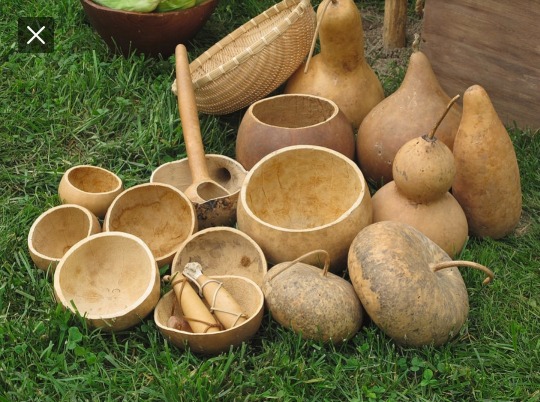
and musical instruments
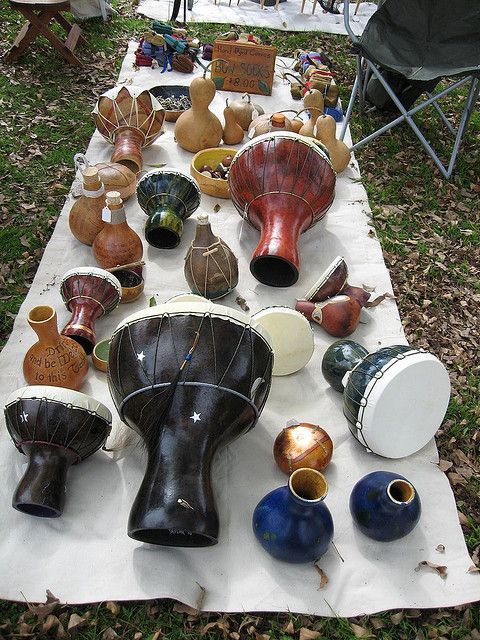

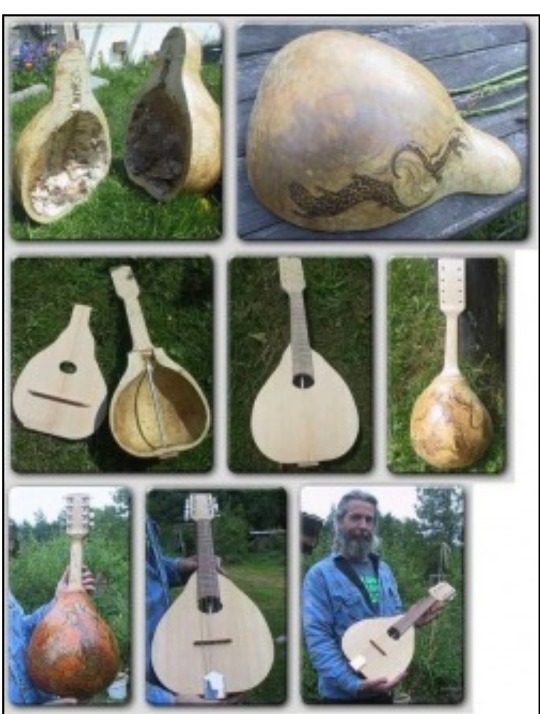
And then, people took the hollow gourds they farmed, and they turned them into houses for birds. We adapted them into the perfect houses for birds, and now there are specific breeds of birdhouse gourd just for making into birdhouses

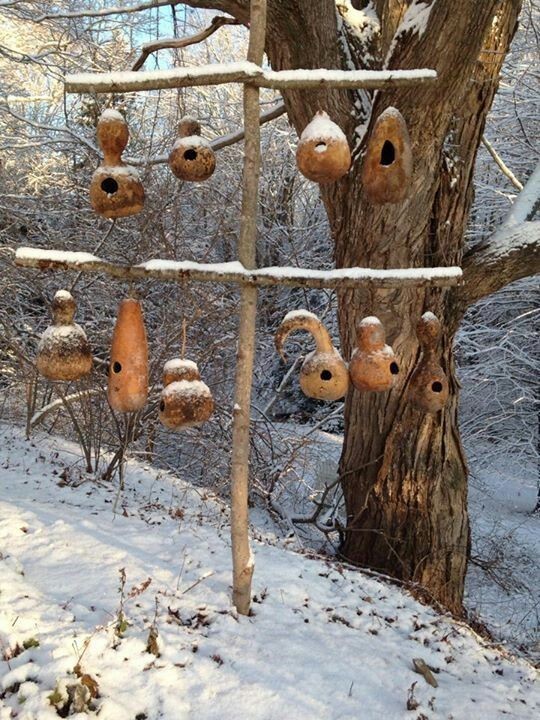
And humans dedicated gardening space and time and thousands of years of breeding to make the gourds so absolutely perfect for birds, that there is a species of bird that lives almost exclusively in them
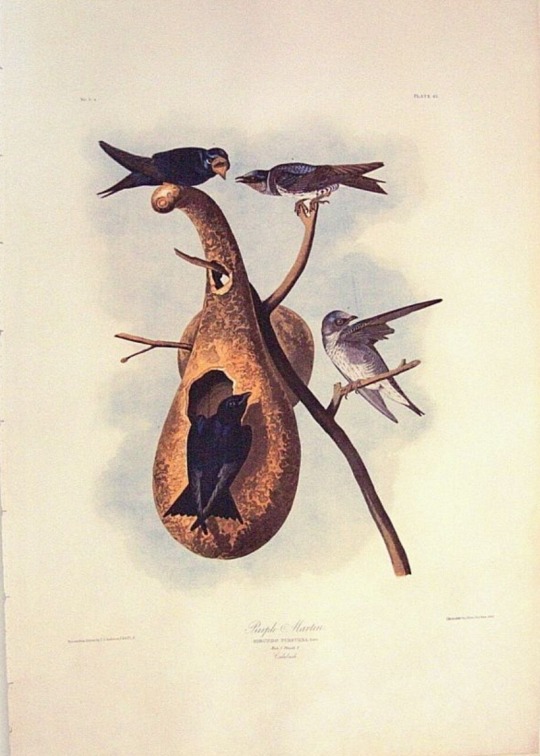
#yes I KNOW i posted about this the other day but *crying* i just love plant domestication and the history of agriculture#and humanity's positive affect on the ecosystems we live in#mine#image IDs in alt text#hmm. I'm gonna tag this#permaculture#just to pspsps @ that community to look at how cool gourds are please everyone grow birdhouse gourds and give cavity nesters places to live#i don't think mine will become fully ripe before i get my first frost :( next year i need to start gourds indoors#i didn't want to grow them before because i didn't have much garden space but now i do and i need to grow all of them#i might be. a little obsessed with gourds. but also i saw a pair of purple martins flying by the road last year#and i had never seen one before then! and i need to see more of them#i have a few hundred barn swallows but i need more birds flying around my house. more!!#and also i have a ton of invasive cavity nesting species around here. house sparrows and starlings.#gotta make up for those things competing with native birds for nest dites#*sites#the invasive birds very often win :/#that's why they're invasive#i really do need to start trapping them....
31K notes
·
View notes
Text

I need a front yard garden ASAP. They’re so fucking pretty. Let me be cute and feed my neighbors.
672 notes
·
View notes